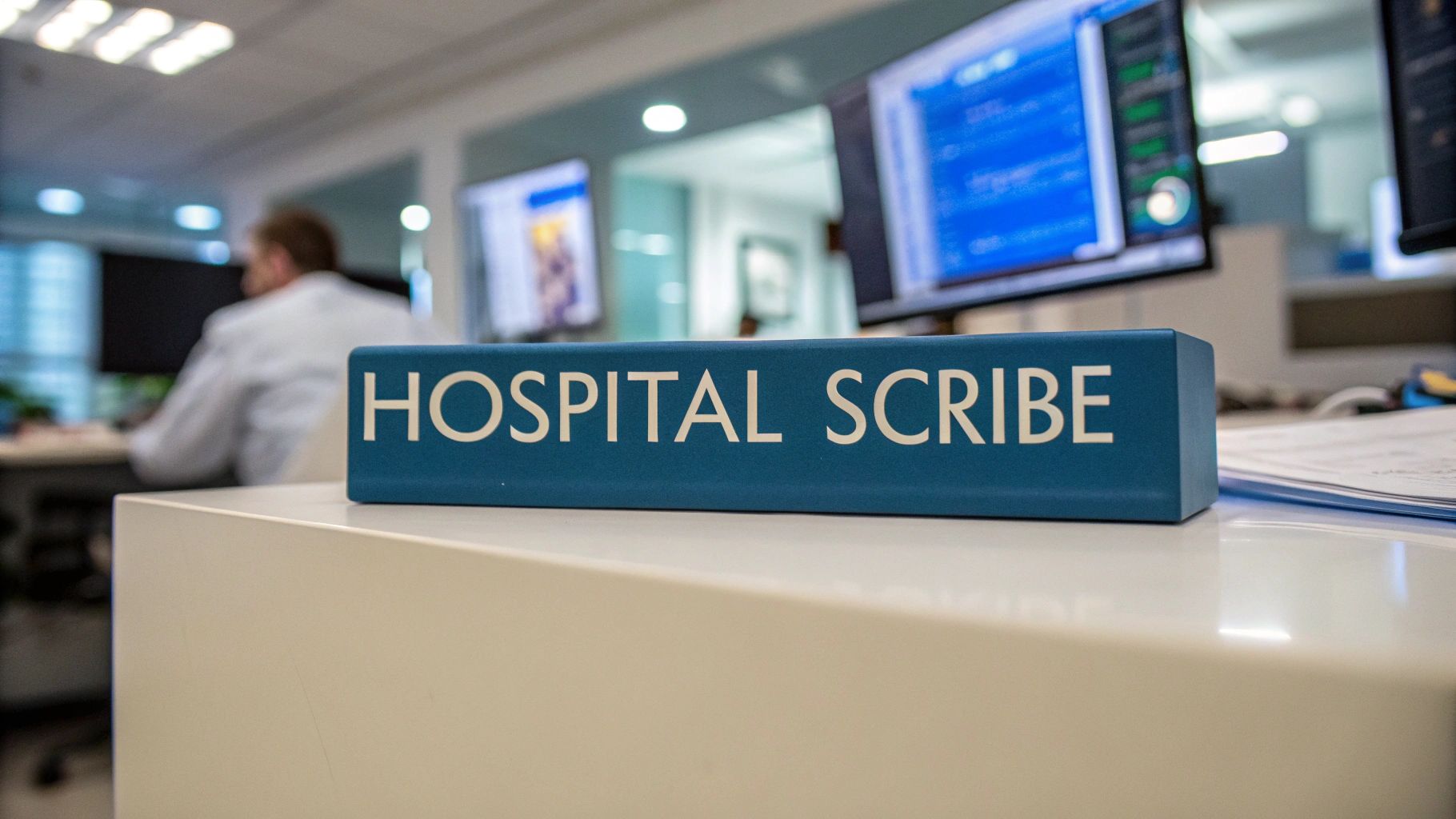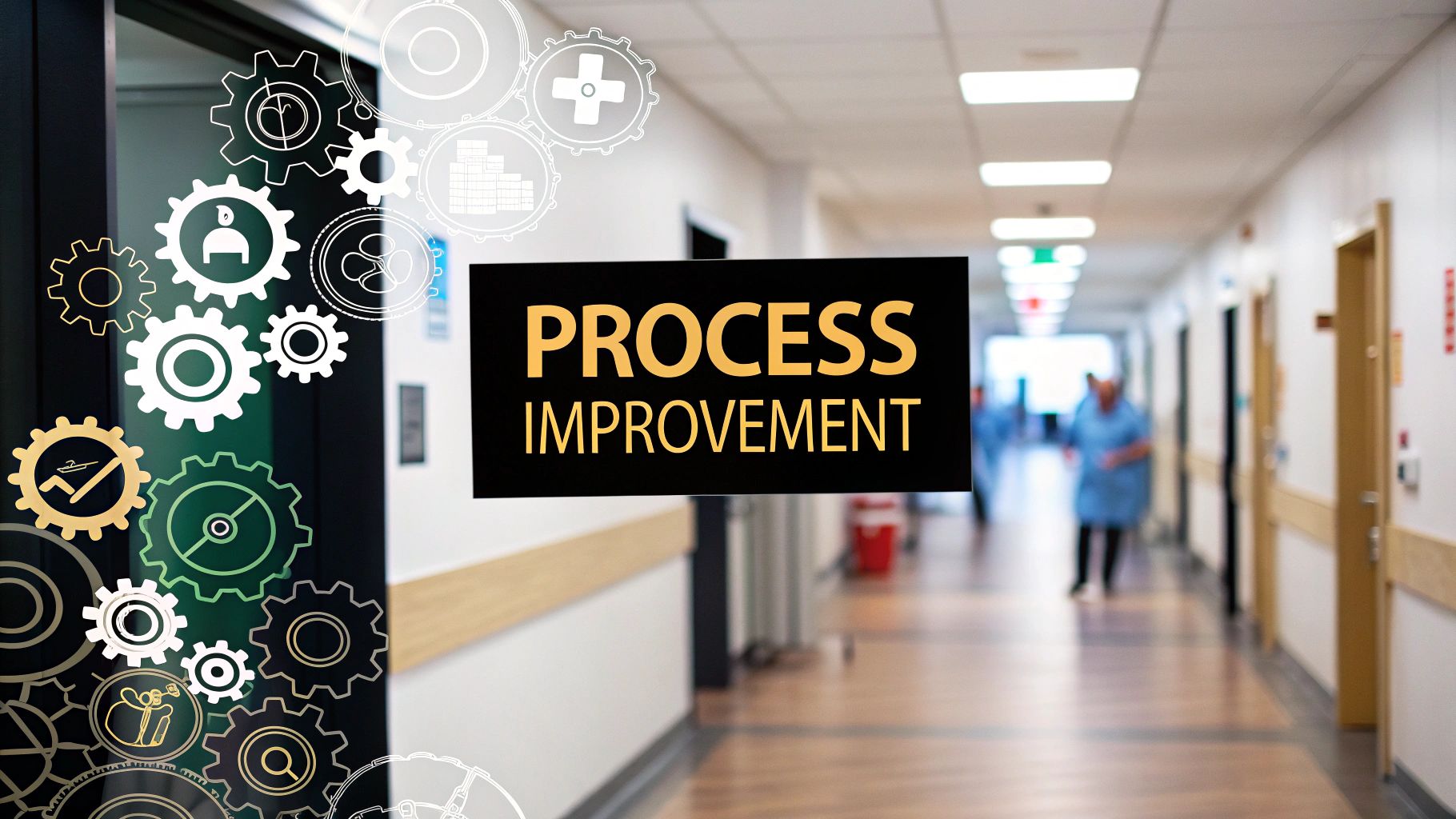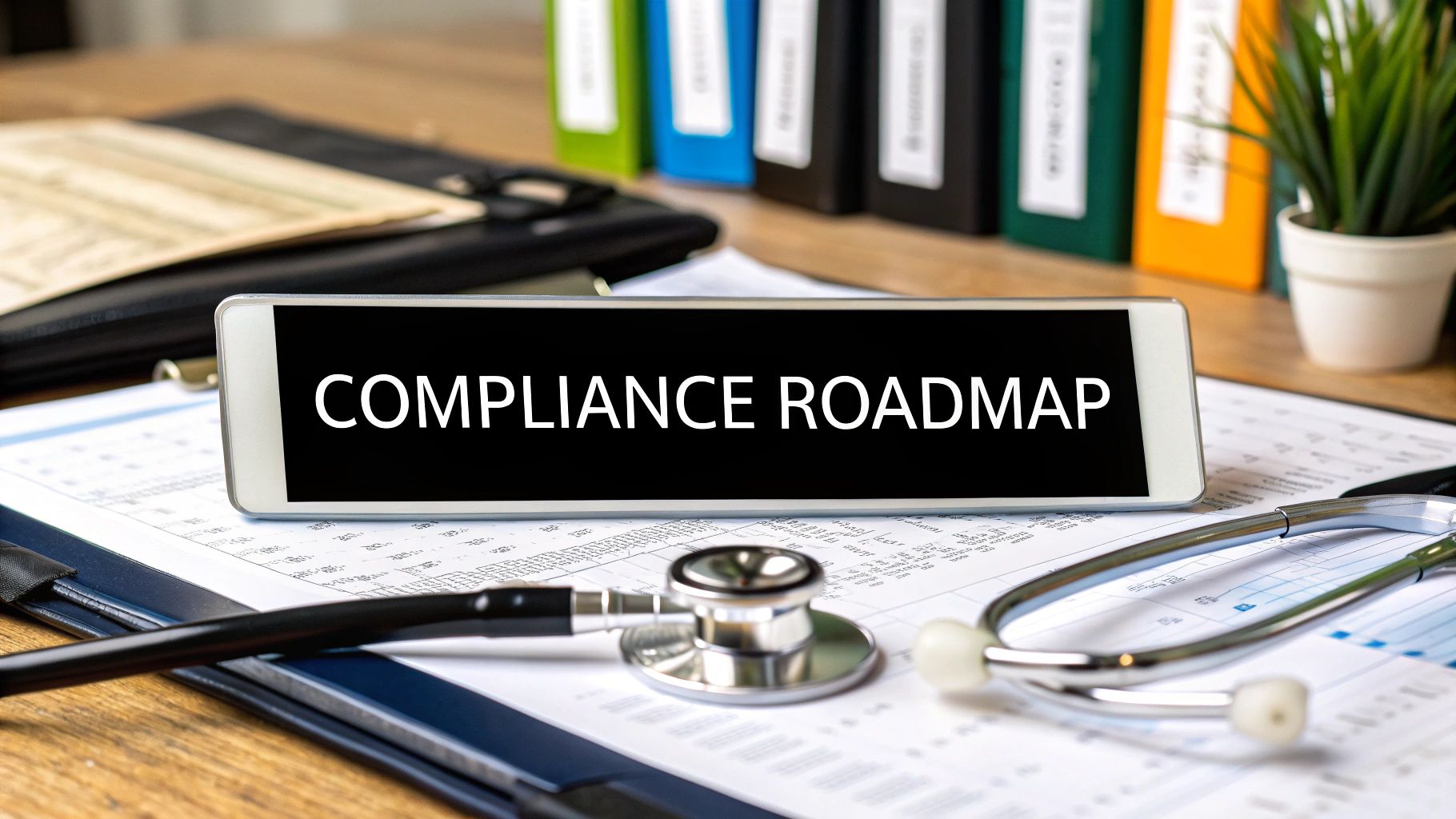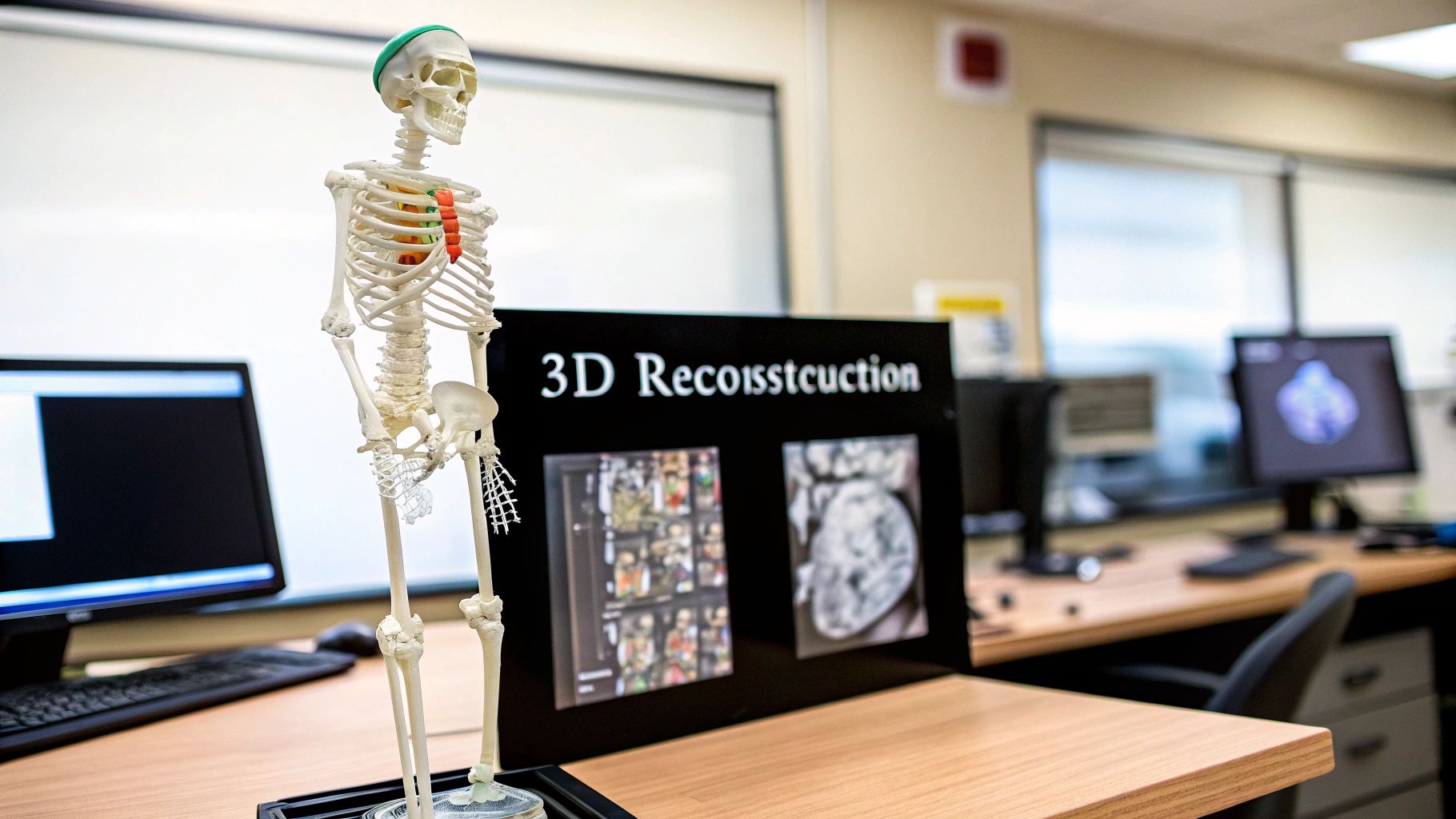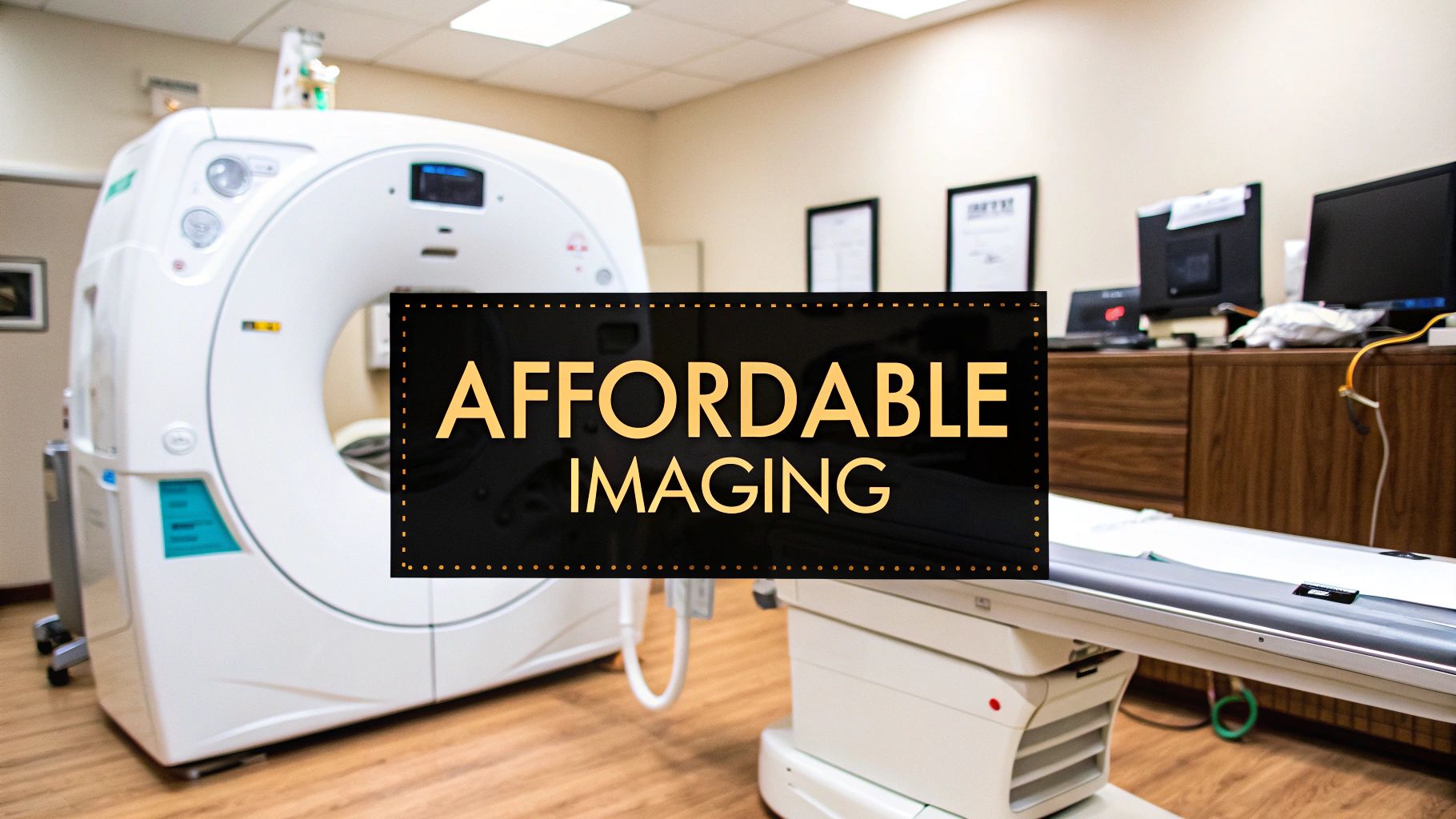The Hospital Scribe Revolution: Beyond Basic Documentation
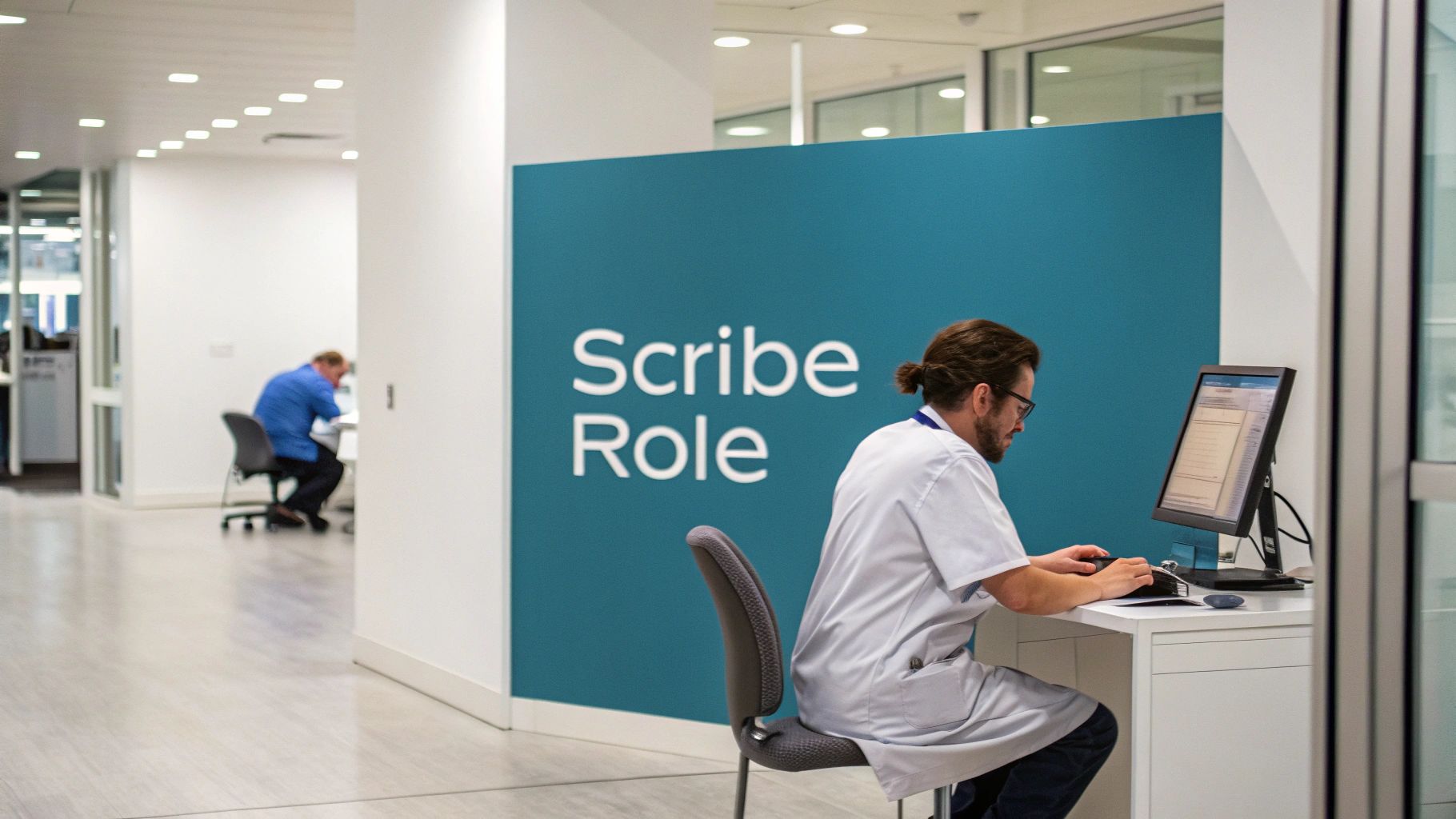
The role of a hospital scribe has evolved significantly. No longer just note-takers, scribes are now vital members of the medical team, effectively extending the physician's capabilities. They manage the complexities of real-time documentation within Electronic Health Records (EHRs) across diverse medical settings, from the fast-paced Emergency Room to specialized clinics. This shift demands a new and expanded skillset.
Essential Skills of the Modern Hospital Scribe
Modern hospital scribes require more than just fast typing. A combination of technical proficiency and strong interpersonal skills is essential for seamless team integration and optimal patient care.
-
Medical Terminology Mastery: A solid understanding of medical terminology is fundamental for accurate and efficient documentation, allowing scribes to quickly translate complex medical jargon into clear records.
-
EHR Proficiency: Navigating various EHR systems is crucial. Scribes must be proficient in quick and accurate data entry, efficient information retrieval, and maintaining data integrity.
-
Acute Listening & Observational Skills: Actively listening to physician-patient interactions, capturing key details, and observing non-verbal cues are vital for comprehensive medical records.
-
Discretion & Professionalism: Handling sensitive patient information requires utmost discretion and adherence to HIPAA regulations. Professionalism in all interactions is paramount.
-
Adaptability & Problem-Solving: Medical environments are constantly changing. Scribes must adapt to these changes, prioritize tasks, and troubleshoot technical issues effectively.
These skills empower scribes to manage administrative tasks, allowing physicians to prioritize patient care. Accurate and timely documentation also contributes to improved billing and reduced medical errors.
Medical scribes are in high demand, especially in the U.S., where their role in managing EHRs is essential. With healthcare providers facing increasing administrative burdens, scribes alleviate this workload, allowing physicians to focus on patients. Over 408 medical scribe job openings highlight the demand and growth potential. Benefits include increased provider productivity, reduced physician burnout, and enhanced patient care through better documentation. However, the field faces challenges due to high turnover rates, as many scribes are pre-med students. Explore this topic further here.
Transforming Physician Workflow
Hospital scribes significantly impact physician workflow, optimizing efficiency and promoting a patient-centered approach. By handling real-time charting, scribes free physicians to focus on patient interaction, thorough examinations, and personalized treatment plans. This shift increases patient satisfaction and allows for more comprehensive care. Scribes are becoming increasingly vital in modern medical practice, contributing to both improved patient outcomes and physician well-being, helping to shape a more sustainable and effective healthcare system.
Measurable Impact: How Hospital Scribes Transform Care
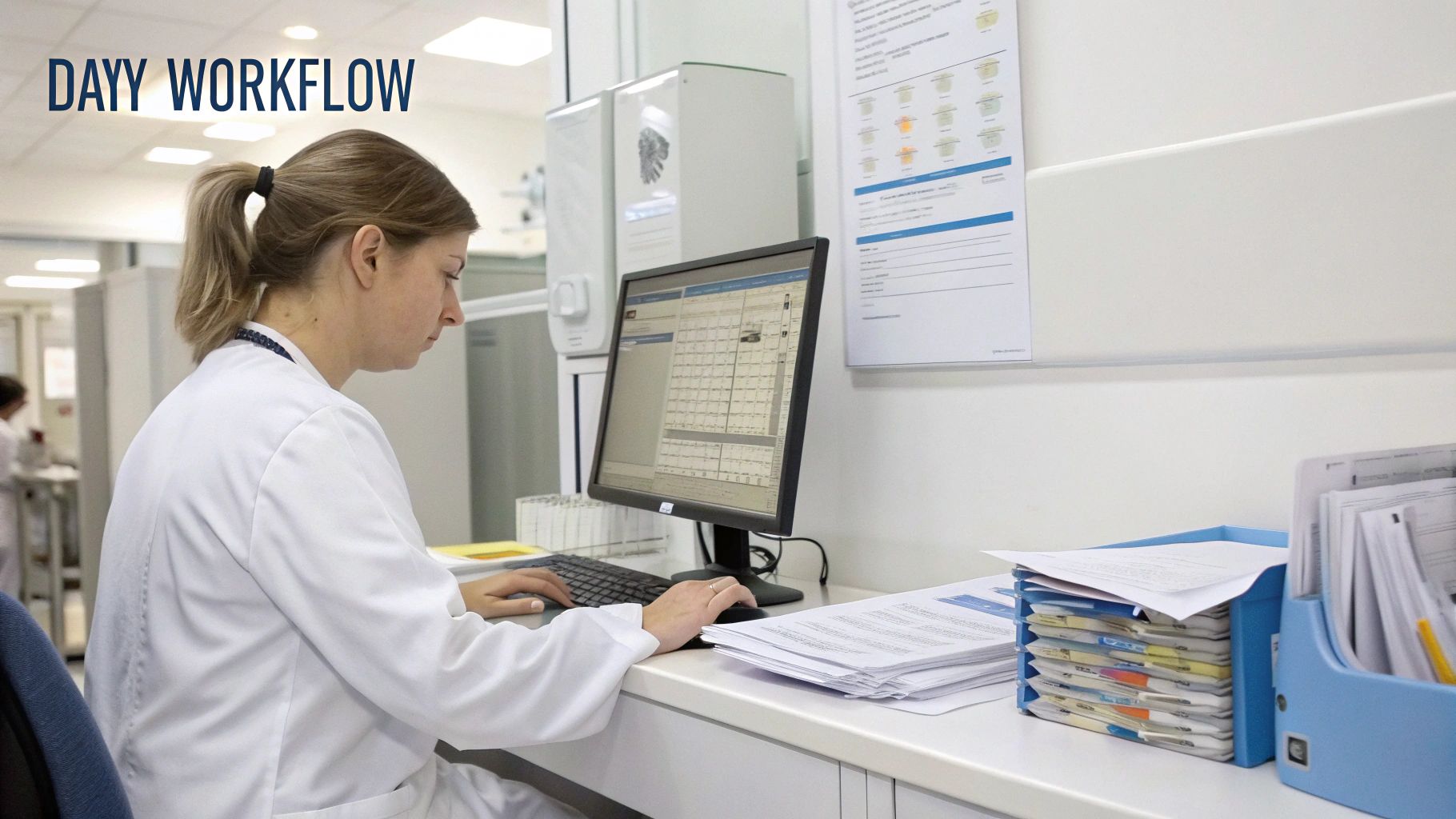
Beyond the qualitative advantages, the impact of hospital scribes is truly measurable. These professionals are significantly improving key areas of healthcare delivery, leading to better results for both patients and physicians.
Increased Physician Productivity and Patient Volume
One of the most significant impacts of using hospital scribes is the increase in physician productivity. By handling the often time-consuming task of documentation, scribes free up physicians to concentrate on patient care.
This increased efficiency translates directly into a greater patient volume. Some studies show physicians with scribes can see 2 to 3 more patients per day.
This boost in efficiency can improve access to care and reduce patient wait times. Furthermore, by lessening administrative burdens, scribes help reduce physician burnout, contributing to a more sustainable medical workforce.
Improved Care Quality and Patient Satisfaction
It might seem surprising, but increased physician productivity facilitated by scribes often correlates with improved care quality. With less time spent on documentation, physicians can devote more attention to each patient.
This allows for more thorough examinations and richer conversations, fostering stronger patient-physician relationships. This, in turn, leads to clearer communication and improved patient understanding of their conditions.
This increased face time directly impacts patient satisfaction. Studies indicate a strong correlation between scribe use and higher patient satisfaction scores.
To further illustrate these points, let's examine the data:
Impact of Hospital Scribes on Physician Performance
This table presents key metrics comparing physician performance with and without hospital scribes.
| Performance Metric | Without Scribes | With Scribes | Improvement % |
|---|---|---|---|
| Patients Seen Per Day | 12-15 | 14-18 | 13-20% |
| Time Spent on Documentation (per patient) | 20-30 minutes | 5-10 minutes | 66-83% |
| Patient Satisfaction Score | 7/10 | 8.5/10 | 21% |
| Documentation Error Rate | 5% | 1% | 80% |
The table clearly demonstrates how scribes positively influence key performance indicators, ultimately benefiting both patients and the healthcare system. The notable improvements in patient volume, time management, and satisfaction underscore the value scribes bring to the medical environment.
Reduced Documentation Errors and Billing Accuracy
Accurate and timely documentation is crucial for patient safety. Hospital scribes are trained to create comprehensive medical records, minimizing potentially harmful documentation errors.
Complete records are also essential for proper billing and reimbursement. By ensuring accurate coding and documentation, scribes contribute to improved billing accuracy and reduced claim denials.
This leads to greater financial stability for healthcare institutions and streamlines revenue cycle management.
Return on Investment (ROI) of Scribe Programs
Implementing a hospital scribe program offers financial benefits. While there's an initial investment in training and employing scribes, many hospitals see a positive ROI.
The increase in patient volume and improved billing accuracy can often offset the costs associated with the program. Several studies have demonstrated a strong return on investment for hospitals utilizing scribe programs effectively. This reinforces the value of scribes, showing their contribution to both improved care and the financial health of healthcare institutions.
The Human-AI Partnership: Hospital Scribes in the Digital Age
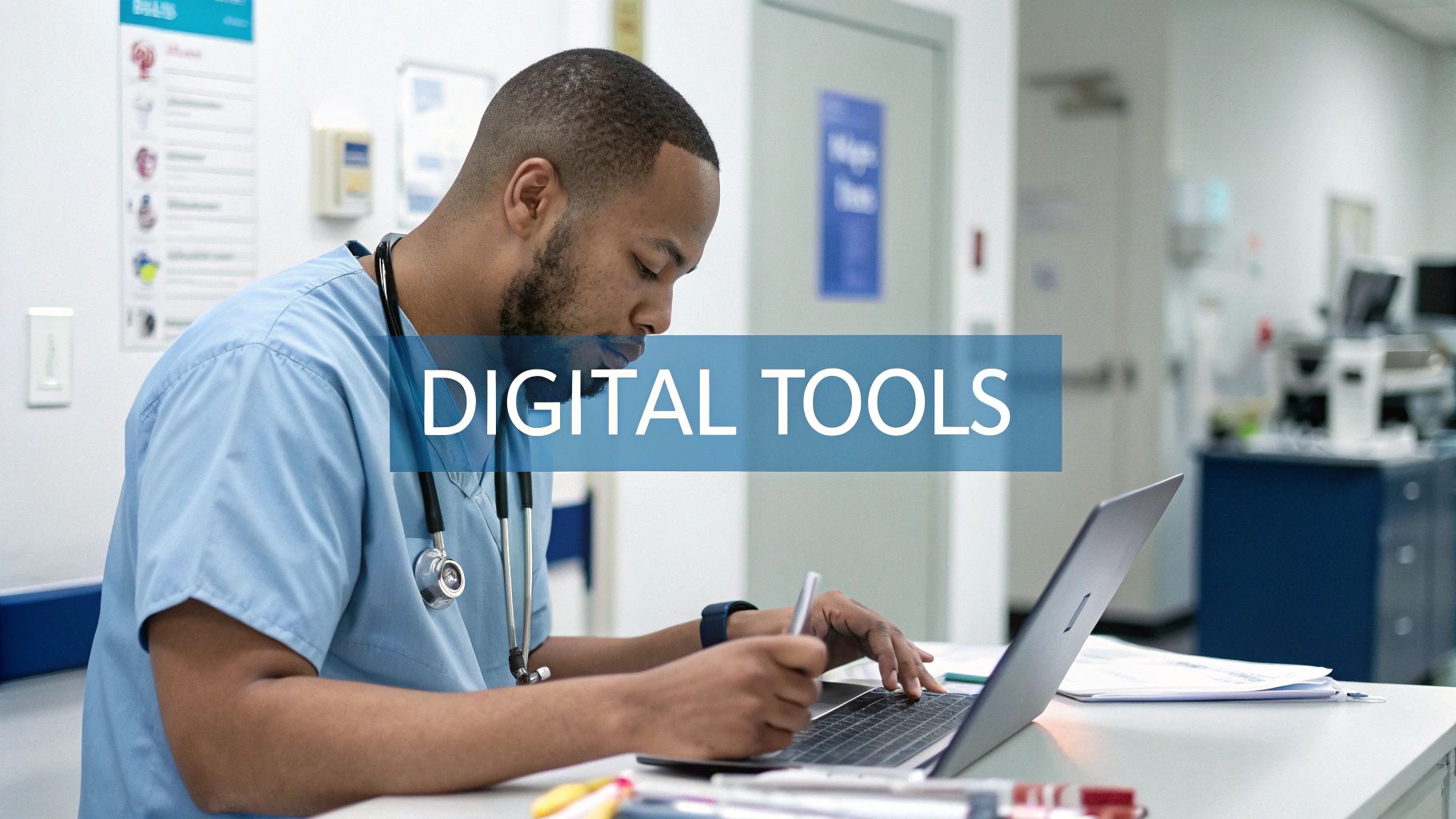
The hospital scribe profession is evolving alongside advancements in healthcare technology. This shift is moving the field from traditional, in-person scribing towards a more technologically driven model. Rather than replacing human scribes, this evolution presents opportunities for collaboration and increased efficiency.
AI-Powered Tools: Enhancing the Scribe's Role
AI-powered documentation tools are becoming more common in healthcare settings. These tools utilize technologies like Natural Language Processing (NLP) and ambient listening to automate parts of medical documentation. This allows scribes to concentrate on more complex tasks, such as direct patient interaction and data accuracy. For example, AI can create initial patient note drafts, freeing scribes to confirm information, add important details, and guarantee comprehensive records.
The integration of AI and virtual scribing technologies has significantly changed the role of hospital scribes. AI medical scribes use NLP and speech recognition to automatically generate medical reports, improving efficiency and accuracy. The global AI in healthcare market, which includes AI medical scribes, is projected to grow at a CAGR of 44.9% between 2021 and 2026, reaching $45.2 billion by 2026. Key players in this market include companies like Augnito, DeepScribe, Nuance, and 3M M*Modal, all of which are innovating in voice recognition and clinical documentation automation. However, challenges remain, such as initial training requirements and privacy concerns. Learn more about this evolving market here.
Real-World Implementations and Limitations
Hospitals are currently exploring and implementing AI-assisted scribing programs. These programs often use a hybrid model where human scribes work alongside AI systems. This combined approach can greatly increase efficiency and reduce documentation errors. However, it's crucial to acknowledge the existing limitations. AI systems are still developing, and human oversight remains vital for accuracy and ethical considerations.
The Future of the Hospital Scribe
Forward-thinking healthcare organizations are embracing a redefined scribe role. This modern scribe utilizes technology to improve their skills, focusing on uniquely human attributes like critical thinking, empathy, and nuanced communication. This ensures the human element remains central to patient care, while technology provides valuable tools to improve efficiency and accuracy. By focusing on the collaboration between human expertise and technological advancements, the future of hospital scribing is poised for growth and continued impact within the healthcare field.
Breaking Into Hospital Scribing: Your Step-by-Step Guide

So, you’re interested in becoming a hospital scribe? This guide provides practical steps to navigate the process, from initial interest to landing your first job. It offers insights to strengthen your application and prepare you for a successful scribe career.
Educational Pathways and Training Programs
While no single degree is required to become a hospital scribe, certain educational backgrounds are advantageous. A strong foundation in science, especially biology and anatomy, is highly recommended. Many aspiring scribes follow pre-med tracks, but related fields like health informatics can also be beneficial. This background provides a basic understanding of medical terminology and processes, which can shorten your training time.
Several dedicated scribe training programs offer certifications. These programs cover essential skills, including medical terminology, Electronic Health Record (EHR) systems, HIPAA compliance, and clinical procedures. Completing a recognized program can give you a competitive edge and demonstrate your commitment to the profession.
Mastering Medical Terminology and EHR Systems
Two crucial skills for any hospital scribe are medical terminology and EHR system proficiency. Medical terminology is the language of healthcare, essential for accurate documentation. Consistent study and practice, using resources like online flashcards, medical dictionaries, and mobile apps, are key to mastering this language.
EHR systems are the digital backbone of modern healthcare. Different hospitals may use different systems, but core functionalities are often similar. Familiarity with these systems is paramount for efficient documentation and information retrieval. Many training programs offer hands-on experience with common EHR platforms.
Application, Interview, and Career Advancement
Your application should highlight relevant skills and experience, including medical terminology courses, EHR proficiency, and any prior healthcare experience. Emphasize your ability to learn quickly, adapt to new environments, and maintain confidentiality. These are highly valued traits in a hospital setting.
During the interview, be prepared to discuss your understanding of the scribe's role, your career motivations, and your ability to handle the demands of a fast-paced medical environment. Showcase strong communication and interpersonal skills, and express genuine enthusiasm for the opportunity. Hospitals are increasingly using tools like AI receptionists to automate administrative tasks.
Finally, consider how being a scribe can help you achieve future career goals. Many scribes use this role to gain valuable experience before applying to medical school or other healthcare professions. It provides a unique inside look at how a hospital operates and allows you to build relationships with physicians and other healthcare professionals. This experience can strengthen your applications for advanced programs and future healthcare careers.
The Expanding Universe of Hospital Scribe Opportunities
The demand for skilled hospital scribes is a global phenomenon, extending beyond individual hospitals and even countries. This growing need presents exciting new career opportunities for those interested in this important healthcare role. The career potential for hospital scribes is expanding rapidly.
Virtual Scribing and Remote Documentation
One of the most significant developments is the rise of virtual scribing. This allows scribes to work remotely, supporting hospitals and clinics worldwide with their documentation needs. A scribe in India, for example, could assist a physician in the United States. This flexibility not only creates numerous opportunities for scribes but also helps healthcare facilities address staffing challenges. It also paves the way for specialized roles within virtual scribing itself.
Emerging Roles in Specialized Clinical Settings
Beyond general medicine, the need for scribes in specialized clinical settings like oncology, cardiology, and surgery is increasing. These specialized roles demand a deeper understanding of specific medical terminology and procedures. However, they offer the chance to develop advanced skills and contribute to highly specialized areas of medicine. This specialization adds another dimension to the expanding world of hospital scribe opportunities.
The global market for medical transcription services, which includes hospital scribes, is projected to reach $125 billion by 2031. Driven by advancements in automation, record keeping, and portability technologies, this growth is fueled by a CAGR of 6.1%. The demand for medical transcription is also influenced by the outsourcing of services to countries like India, the Philippines, and China, where there are lower labor costs and readily available skilled workforces. This trend reduces administrative burdens and internal costs for hospitals. The market is segmented into various report types, including consultation reports, discharge summaries, and operative notes. Currently, North America leads the market geographically, followed by Europe and the Asia-Pacific region. Find more detailed statistics here.
Compensation, Growth, and Driving Factors
With the increasing demand for hospital scribes comes the potential for competitive compensation. Several factors are driving this growth. The increasing complexity of medical documentation requires specialized professionals to manage it effectively. The continued adoption of Electronic Health Record (EHR) systems, while beneficial, adds to the documentation burden on physicians, making the role of the hospital scribe even more critical.
Innovative Scribing Programs and Healthcare Environments
Hospitals and clinics are adapting to these trends by implementing innovative scribing programs. These programs range from traditional in-person models to fully virtual teams. The focus is on optimizing documentation processes, reducing physician burnout, and improving patient care. Some larger hospital systems are even exploring AI-assisted scribing to further enhance efficiency. This constant evolution of scribing programs ensures the field remains dynamic and responsive to the changing needs of the healthcare landscape.
Future-Proofing the Hospital Scribe Profession
The hospital scribe profession is evolving, presenting both challenges and exciting opportunities. This section explores how the field is adapting and what the future holds for this vital role.
Addressing Retention and Standardization
One of the biggest hurdles facing the hospital scribe profession is high turnover. Many scribes are pre-med students using the role as a stepping stone to medical school. This creates a constant need for recruitment and training.
Innovative healthcare organizations are tackling this challenge by offering career advancement pathways within the scribing field. Creating opportunities for specialization and leadership roles encourages long-term commitment.
Another key area for development is the standardization of training. Currently, programs vary widely in quality and content.
Establishing industry-wide standards would ensure consistent competency and professionalism. This could involve certifying programs, creating standardized curricula, or developing recognized credentials. Let's explore the differences between the various scribe models currently available.
To understand the key differences between current scribe models, take a look at the following table.
| Factor | Traditional In-Person | Virtual Scribes | AI-Assisted Scribing |
|---|---|---|---|
| Location | On-site in hospital/clinic | Remote | Remote/Integrated with EHR |
| Interaction | Direct with physician | Primarily virtual, some direct | Minimal direct interaction |
| Cost | Higher due to on-site presence | Moderate | Potentially lower over time |
| Availability | Limited by physical location | More flexible | 24/7 availability |
| Training | Typically in-person | Can be virtual/remote | Requires technical expertise/ongoing updates |
| Turnover | Potentially high | Can vary | Dependent on software reliability |
The table above highlights the evolution of scribe models, from the traditional in-person approach to the more flexible and technologically advanced virtual and AI-assisted options. Each model presents unique advantages and disadvantages for healthcare organizations to consider.
Emerging Specializations and Skill Expansion
As medicine becomes more specialized, so too does the role of the hospital scribe. Emerging specializations are creating exciting growth potential.
For example, scribes can specialize in clinical documentation for specific medical specialties like oncology or cardiology. Other opportunities include roles in quality improvement initiatives, where scribes leverage their understanding of clinical workflows and data.
Forward-thinking scribes are also expanding their skill sets beyond basic documentation. This might include learning new software like Epic or developing expertise in data analysis.
By broadening their capabilities, scribes position themselves as indispensable members of the healthcare team.
Adapting to Changing Care Delivery Models
The ways we deliver and receive healthcare are changing rapidly. Telehealth and remote patient monitoring are becoming increasingly common, influencing the future of the hospital scribe profession.
Virtual scribes are already playing a key role in supporting remote healthcare delivery. They offer documentation support to physicians working from anywhere.
Additionally, the increasing use of AI in healthcare is creating new opportunities for human-AI collaboration. As AI-powered tools take over routine tasks, human scribes can focus on more complex aspects of patient care.
The Future of the Hospital Scribe
The hospital scribe profession is dynamic and resilient. By addressing challenges like retention and standardization while embracing new specializations and technologies, scribes are securing their place in the future of healthcare.
The need for skilled professionals who can navigate the complexities of medical documentation and data will only grow. This makes hospital scribing not just a valuable stepping stone, but a viable and rewarding career path.
